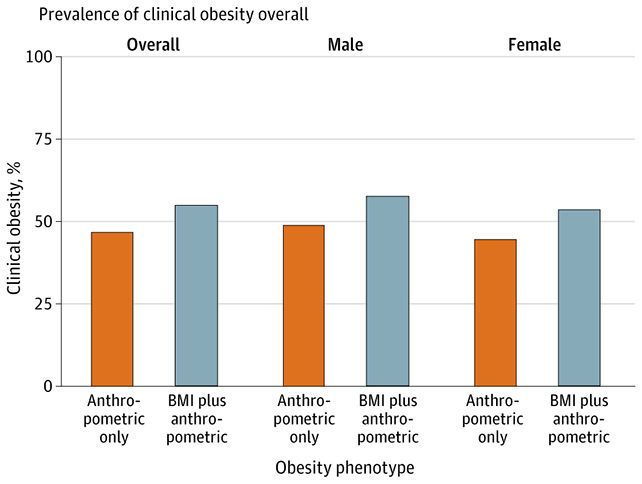In recent years, defining features of different weight classes have moved beyond BMI (body mass index) to include a broader range of measures.
If a new proposal is accepted, almost 70 percent of US adults may find themselves classified as obese.
The problem with BMI as the primary marker for obesity is that the measure – dividing body weight in kilograms by height in meters squared – doesn't necessarily correlate with body fat percentage, which is crucial in assessing health risks such as diabetes and heart disease.
At the start of the year, a commission led by King's College London outlined a new weight-class framework that included measures such as waist circumference, waist-to-hip ratio, and waist-to-height ratio (known as anthropometrics or body measurements).
Related: 3 Out of 5 Adults Will Be Classified Overweight by 2050, Study Finds
Now in a new study, experts from Mass General Brigham in the US have tested this updated set of definitions on the records of 301,026 people in a large health database who were tracked for an average of four years.
The stats showed that 68.6 percent of these individuals would be classed as obese under the new definitions, compared to 42.9 percent under the existing guidance. That's a big jump, with big implications for the health of the population.

"We already thought we had an obesity epidemic, but this is astounding," says lead author and endocrinologist Lindsay Fourman.
"With potentially 70 percent of the adult population now considered to have excess fat, we need to better understand what treatment approaches to prioritize."
The large rise in the percentage of people in the obesity classification was a direct result of the new anthropometric factors, the researchers found, and varied with age: for those over 70, almost 80 percent of adults met the obesity criteria.
People newly classed as obese were also found to be at a significantly higher risk of diabetes, cardiovascular disease, and mortality, compared to people without obesity. That suggests the latest guidelines are better at identifying individuals for whom weight has become a problem to the extent that it's affecting the risk of health problems.
"Seeing an increased risk of cardiovascular disease and diabetes in this new group of people with obesity, who were not considered to have obesity before, brings up interesting questions about obesity medications and other therapeutics," says endocrinologist Steven Grinspoon.

The new definition of obesity has already been endorsed by 76 organizations, including the American Heart Association and The Obesity Society. As yet, it hasn't been officially adopted by governments and health systems.
Nonetheless, this latest study gives us some idea of the difference it might make. We might see a significant shift in the number of people given medications for managing or preventing obesity, for example.
"Identifying excess body fat is very important as we're finding that even people with a normal BMI but with abdominal fat accumulation are at increased health risk," says Fourman.
"Body composition matters – it's not just pounds on a scale."
The research has been published in JAMA Network Open.
